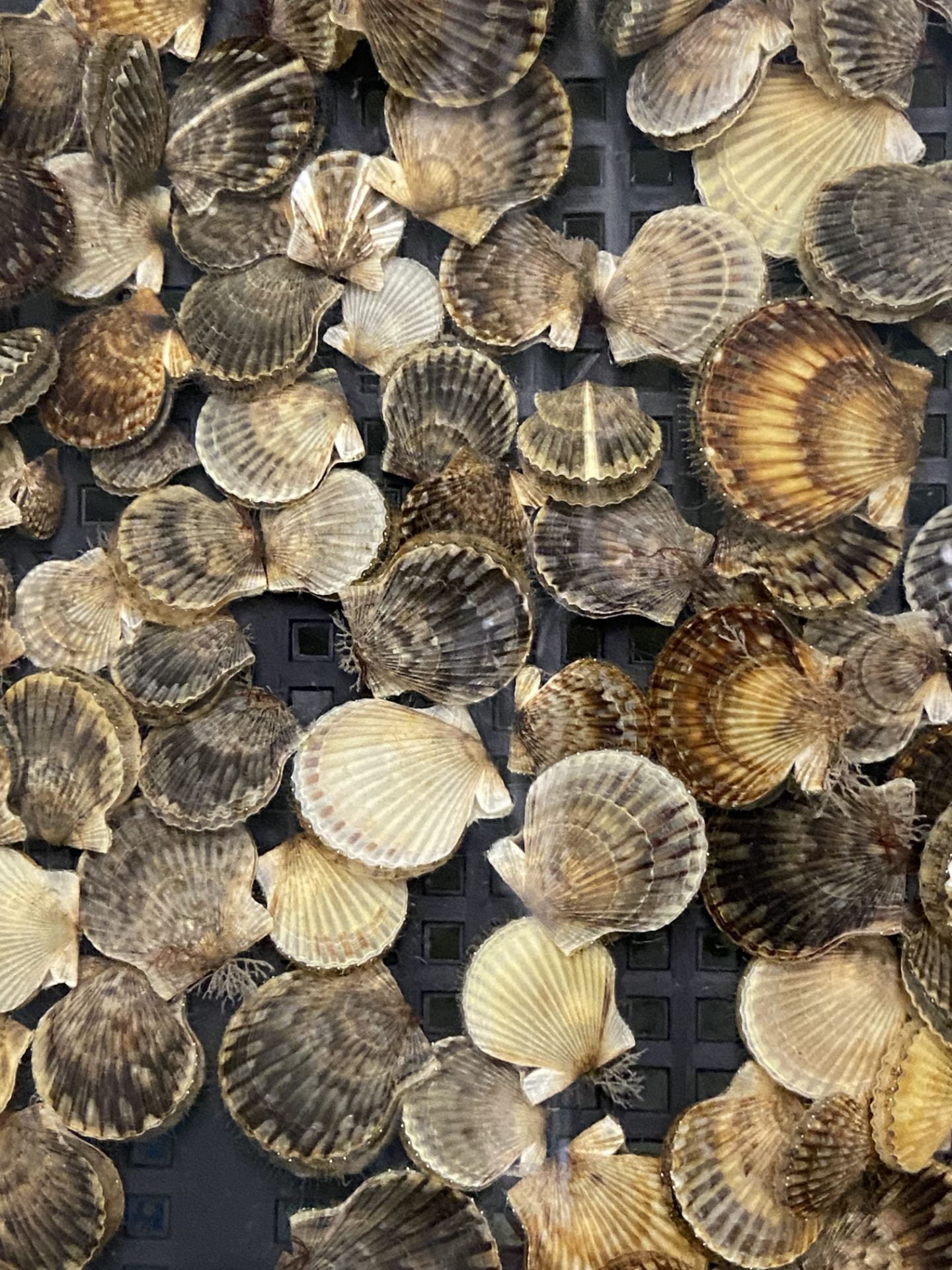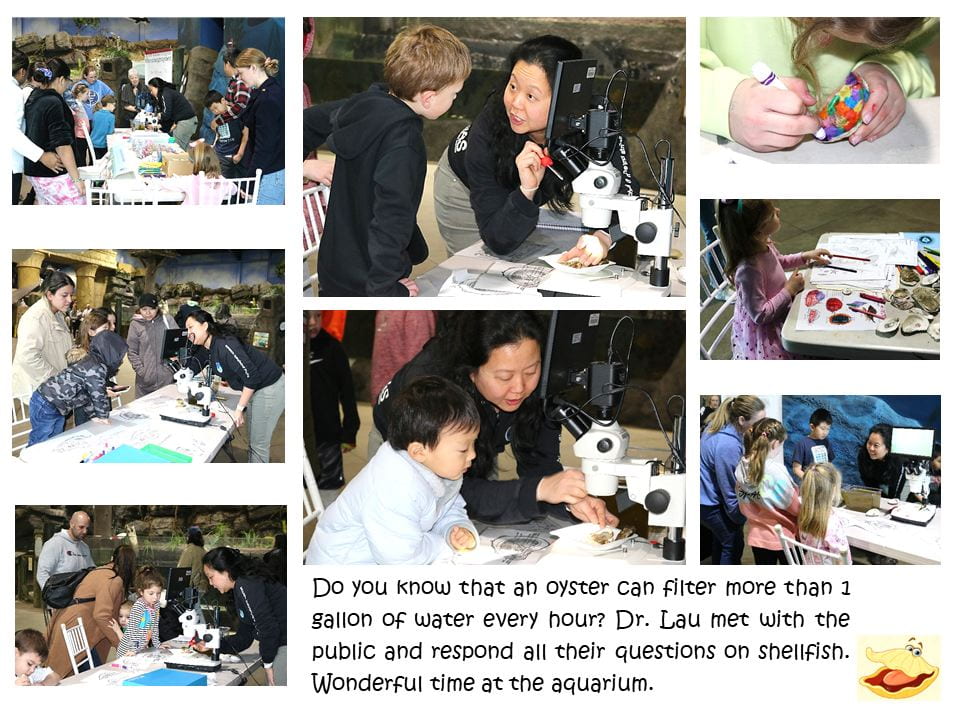Author Archives: Emmanuelle Pales Espinosa
Choosing Fish Wisely
June 1st, 2024 – Choosing Fish Wisely
Maureen Murphy, Stony Brook University. The story of mercury in the environment is complex. But the story is also fascinating in that mercury is a naturally occurring element. The story includes intriguing science on how mercury enters into the ecosystem and how it is transformed to more toxic forms by microorganisms, how it biomagnifies in the food chain, how that translates to levels of methylmercury in different fish species, and ultimately how it ends up inside of us. Meet with the project coordinator of The Gelfond Fund for Mercury Research & Outreach and learn about mercury cycles.
Exciting day at the Aquarium with Sivanna Trainer!
Why Long Island scallops are dying?
April 20, 2020 – Why Long Island scallops are dying?
Sivanna Trainer, Stony Brook University. Come join us to learn about the wonders of shellfish disease,
especially the parasite impacting our scallops on Long Island. The Marine Animal Disease Lab at
Stony Brook has been working diligently to learn about this parasite and how it impacts scallop health
with changing environmental conditions. Take a look through the microscope or mix/match scallop
shells and learn something new!
Photo credit: E. Pales Espinosa
Another great Saturday afternoon at the LI Aquarium with Bob and his team!
Sponges & Bryozoans of Long Island, NY
March 23, 2024 – Sponges & Bryozoans of Long Island
Robert Thacker, Stony Brook University. Learn about the variety of sponges and bryozoans that live on Long Island. These sessile animals are part of a diverse community of benthic invertebrates found on our shoreline. We will explore how to identify these species and how they feed on phytoplankton and detritus.
Red Beard Sponge
Photo credit: Stephen Witzig, https://www.inaturalist.org/taxa/81782-Clathria-prolifera
OYSTER POWER!! So much fun at the LI Aquarium last Saturday.
Due to bad weather, Dr. Lau will be at the aquarium on February 24. We are waiting for you!
Oysters on a half shell, Oyster Power!
February 17, 2024
Meet with Dr. Joyce Lau from Farmingdale State College and learn all you need to know about oysters. These marine creatures are tasty but they are also ecological superheroes. They help clean the waters they live in and build homes for other organisms. Come unlock the mystery of oyster cleaning power!

Credit: Oyster Recovery Partnership/https://www.fisheries.noaa.gov/national/habitat-conservation/oyster-reef-habitat






